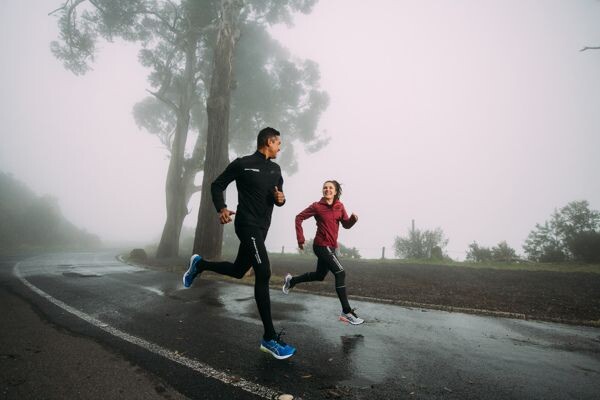Running News Daily
Running News Daily is edited by Bob Anderson. Send your news items to bob@mybestruns.com Advertising opportunities available. Train the Kenyan Way at KATA Kenya and Portugal owned and operated by Bob Anderson. Be sure to catch our movie A Long Run the movie KATA Running Camps and KATA Potato Farms - 31 now open in Kenya! https://kata.ke/
Index to Daily Posts · Sign Up For Updates · Run The World Feed
Training through the seasons: injury prevention tips
The start of a new season marks a shift in the training environment for competitive runners across Canada. Distinct challenges arise as runners shift their focus to new racing distances or terrains. As runners transition from outdoor to indoor running in winter, and switch into cross-country running in the fall, the ligaments and tendons of the lower extremities are put to the test. New running environments place demands on these structures and may leave runners vulnerable to injury.
Clinically, my treatment approach is to support these structures with targeted strength training. Loading the joints of the lower extremity with running-specific single-leg movements can help prepare them for the demands of new surfaces and terrains. Single-leg squats, lunges and calf-based loading strategies can be done with the goal of preventing long-term injuries. Jumping-based exercises on uneven surfaces are another great option, because they mimic the demands that runners may experience during races over grass, hills, and mud.

As the weather gets colder, many athletes across Canada turn to doing at least some of their training indoors. An indoor track presents a unique challenge to the athlete’s body, as everyone runs in a counterclockwise direction only. The repetitive nature of running, combined with consistently turning in one direction, can lead to various loading challenges, which can be amplified on the tighter turns of indoor tracks. Researchers from Western University found that the ankle-stabilizing muscles on the left leg on the inside edge of the turn developed strength changes distinctly different from those on the opposite leg, which they suspect are from athletes constantly turning to the left on an indoor track.
In our work with runners at the Runner’s Academy in Toronto, we have found that this type of asymmetrical loading pattern can contribute to muscular imbalances and running-related injuries affecting the ankle, knee, hip and pelvis. Clinically, I use hands-on manual therapies with targeted rehabilitation exercises to address areas of muscular compensation and joint overuse.

If you are training on a running track indoors or outdoors, varying your direction between clockwise and counterclockwise is essential to reduce the amount of rotational force the body is subjected to.
To optimize your faster-paced workouts indoors, I recommend doing your warm-up and cool-down jogs outdoors, away from the indoor track. This allows your body to reset and adapt after the repetitive stresses of indoor running, enhancing overall performance and reducing the risk of injury. This promotes variability and gradually exposes the body to stress on a range of surfaces and conditions. If I am training for an indoor track race or coaching, I practice these training modifications and encourage everyone else to try them.
Dr. Robert Lawand is a chiropractor at The Runner’s Academy in Toronto. He can be found training and racing in events from the 1,500m up to the half-marathon with the Royal City Athletic Club, and coaching high school track and field with the University of Toronto Track and Field Club.
by Dr. Robert Lawand
Login to leave a comment




